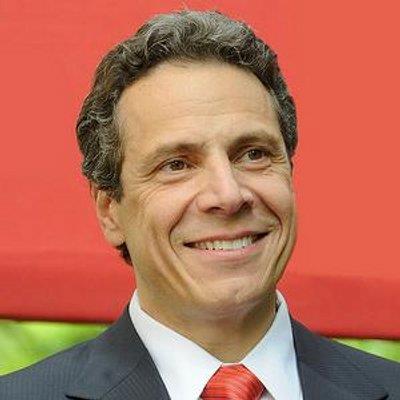
Governor Cuomo Announces $2 Million to Expand Substance Use Disorder Treatment
Funding will add new beds to provide residential treatment services in upstate New York
Governor Andrew M. Cuomo recently announced $2 million in new funding to
support 50 new treatment beds to help New Yorkers with substance use disorders
in upstate New York. The funding will support 50 new residential treatment
beds in the Southern Tier, the Finger Lakes region or Western New York.
“Drug addiction has impacted the lives of many across our state,
but today we are taking a critical step in helping our communities face
this epidemic head-on,”
Governor Cuomo said. “These beds will provide greater access to the treatment and support
services designed to save lives and help those in need get back on the
right track.”
These new treatment beds, either at one 50-bed site or two 25-bed sites,
continue the Governor’s statewide efforts to address the heroin
and opioid epidemic including approving new opioid treatment programs
in Buffalo, Albany, Syracuse, Peekskill, Troy, Plattsburgh, Utica and
Watertown, and other residential treatment beds in Staten Island and 130
new beds in Albany, Niagara, Suffolk and Westchester counties.
Statewide, heroin admissions for all ages have increased by 30 percent
in the last ten years. To halt this trend, Governor Cuomo has implemented
aggressive efforts, including changes in insurance to ensure coverage
of substance use disorder treatment, increased access to treatment, additional
treatment capacity in regions across the state, and comprehensive public
awareness efforts.
To meet the requirements for this new State funding, the new residential
treatment beds must be located in Allegany, Broome, Cattaraugus, Chautauqua,
Chemung, Delaware, Erie, Genesee, Livingston, Monroe, Niagara, Ontario,
Orleans, Schuyler, Seneca, Steuben, Tioga, Wayne, Wyoming and Yates Counties.
The new beds will be in addition to recently announced funding for expansion
of services at Fairview Recovery Services on Merrick Street in Binghamton
which includes $3.6 million for a new 18-bed community residence offering
substance use disorder treatment for women, and approval of new treatment
capacity at Fairview’s existing Crisis Detox facility on Court Street.
New York State Office of Alcoholism and Substance Abuse Services Commissioner
Arlene González-Sánchez said, “Expanding access to treatment is our priority in the fight against
addiction. These additional treatment beds will give individuals from
the Southern Tier, the Finger Lakes or Western New York additional opportunities
to participate in treatment, so that they can get their lives back on
track in a safe, community-based environment.”
The funding is available through a request for proposal administered by
the New York State Office of Alcoholism and Substance Abuse Services.
The site or sites that are selected, through the RFP process, will receive
annual operational costs of up to $2 million once the program is opened.
OASAS will work with the treatment provider that is awarded funding under
this RFP to provide capital funding, if needed, at the site(s) that the
selected provider identifies. Local government units or not-for-profit
agencies that are operating at least one OASAS-certified substance use
disorder treatment program in New York State and are planning to provide
residential services are eligible to apply. Interested entities can learn
additional information about the Request for Proposal by visiting the
procurements page on the NYS OASAS website.
New Yorkers struggling with an addiction, or whose loved ones are struggling,
can find help and hope by calling the State’s toll-free, 24-hour,
7-day-a-week HOPEline at 1-877-8-HOPENY (1-877-846-7369) or by texting
HOPENY (Short Code 467369). Treatment providers can also be located on
the NYS OASAS Find Help page. Visit
www.combatheroin.ny.gov for more information on addressing heroin and prescription opioid abuse,
including a Kitchen Table Tool Kit to help start the conversation about
the warning signs of addiction and where to get help. For additional tools
to use in talking to a young person about preventing underage drinking
or drug use, visit the State’s Talk2Prevent website.
